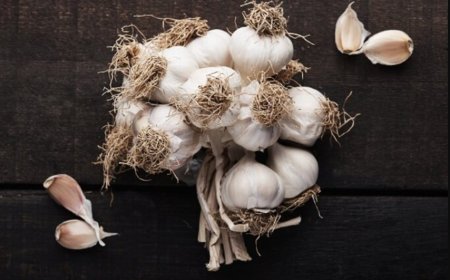The Vegetable That May Be Harder on the Body After 60 — And the Ones That Truly Support Better Health
As we move into our sixties and beyond, even familiar foods can begin to feel different in our bodies. Vegetables we’ve enjoyed our whole lives may digest more slowly, influence energy levels in unexpected ways, or affect blood sugar and circulation differently than before. At the same time, other vegetables may offer steady nourishment, gentle digestion, and a noticeable boost in daily comfort.
2.
The Vegetable That May Be Harder on the Body After 60 — And the Ones That Truly Support Better Health
As we grow older, our bodies begin to respond differently to the foods we’ve enjoyed for decades. After about age 60, changes in digestion, metabolism, circulation, and muscle strength mean
that certain vegetables can feel especially supportive, while others may require a bit more care in how they’re chosen and prepared.
Although we often hear that every vegetable is healthy, the truth is more nuanced. Some vegetables offer steady support for older adults, helping with energy, comfort, and daily wellbeing. Others can be more challenging for the body if eaten too often, in large amounts, or without proper preparation.
This article takes a mindful look at both sides. You’ll find:
• Five vegetables that tend to be especially gentle and helpful after age 60
• Five vegetables that may require a little extra attention
• Simple ways to build meals that feel supportive, satisfying, and safe
The goal isn’t restriction. It’s awareness. When you understand how foods interact with your changing needs, you can make choices that leave you feeling stronger, steadier, and better nourished.
Why Some Vegetables Feel Different After Age 60
Several natural age-related changes influence how food affects your body:
• The body may process sugars more slowly.
• Muscle strength can decline with time.
• Circulation may become less efficient.
• The brain may be more sensitive to swings in blood sugar.
• The kidneys and liver often benefit from gentler choices.
Because of these shifts, certain vegetables—especially those that are very starchy, naturally bitter, or contain irritating compounds—can feel harder on the system. Others, however, provide steady nourishment without asking much from the body in return.
Understanding these differences can make daily meals more comfortable and supportive.
Five Vegetables That Support Wellbeing After 60
These vegetables tend to be gentle, versatile, and packed with nutrients that help older adults maintain strength, stability, and energy.
1. Red Cabbage: A Colorful Boost for Daily Vitality
Red cabbage may look simple, but it brings impressive benefits to the plate. Its rich pigments offer natural plant compounds that help the body defend itself from everyday stress. Many older adults find that red cabbage helps them feel clearer, lighter, and more energized.
Helpful ideas:
• Shred it into salads with a squeeze of lemon.
• Lightly sauté it to keep its bright color and benefits.
• Avoid lengthy boiling, which can weaken its natural nutrients.
2. Broccoli: A Gentle Support for Heart, Muscles, and Mind
Broccoli is one of the most dependable vegetables for overall wellness. Its natural plant compounds work well with the body, helping maintain steady energy and offering support for metabolism and circulation.
How to enjoy it:
• Steam for a few minutes or sauté lightly.
• Pair with olive oil or garlic for added flavor and benefit.
• Avoid overcooking, which can dull both taste and nutrition.
3. Beetroot: A Natural Way to Support Circulation and Focus
Beets contain gentle, naturally occurring compounds that help the body maintain healthy blood flow. Many older adults notice improved comfort, better energy, and a sense of mental sharpness when enjoying beets regularly in small amounts.
Ways to include them:
• Mix cooked beets into salads with nuts or olive oil.
• Blend into smoothies with apple or carrot.
• Keep portions moderate if you’re prone to digestive sensitivity.
4. Spinach: Nourishment for Eyes, Muscles, and the Nervous System
Spinach offers a blend of nutrients that support eye comfort, muscle function, and overall mental clarity. It contains gentle minerals that help the body relax and recharge.
Best ways to prepare spinach:
• Light steaming or sautéing makes it easier on digestion.
• Enjoy raw spinach only in modest amounts.
• Add to soups, stews, omelets, or blended smoothies.
5. Chayote: Mild in Flavor, Steady in Support
Chayote is a quiet but valuable addition to the diet for adults over 60. Its mild flavor makes it easy to pair with many dishes, while its nutrients help support bones, circulation, and healthy digestion.
How to enjoy it:
• Add it raw to salads.
• Steam or sauté it for a gentle, comforting side dish.
• Pair with healthy fats like avocado or olive oil for better absorption.
Vegetables That May Require a Bit More Care After 60
These vegetables can still be enjoyed, but they are best eaten thoughtfully. The reasons vary: some are starchier, some have natural compounds that may not sit well with everyone, and some need proper preparation to avoid discomfort.
1. Corn: Flavorful and Familiar, but Often Too Starchy
Corn is beloved in many households, but it is naturally higher in starch. For some older adults, this can lead to quick rises in blood sugar and dips in energy afterward.
Tips for gentler enjoyment:
• Keep portions modest.
• Choose fresh corn on the cob rather than processed corn snacks.
• Pair it with high-fiber vegetables and a source of protein.
2. Potatoes: Comforting, but Best in Moderation
Potatoes are a traditional comfort food, but they digest quickly, which may lead to sharp changes in energy. In addition, older potatoes or those stored improperly can sometimes develop bitter-tasting compounds that are best avoided.
Better ways to prepare potatoes:
• Choose firm, fresh potatoes without discoloration.
• Bake or steam them, ideally with the skin.
• Let them cool before eating to create a type of fiber that digests more slowly.
• Limit fried or very creamy versions.
3. Eggplant: Nourishing, but Needs Proper Cooking
Eggplant has wonderful flavor and texture, but it must be cooked thoroughly. When raw or very undercooked, it may cause discomfort for some people.
Safer preparation tips:
• Grill, roast, or bake until fully tender.
• Enjoy in moderate portions if you have a sensitive digestive system.
• Use olive oil to help it cook evenly.
4. Jicama: Refreshing, but Only When Peeled
Jicama is crisp and refreshing, but the outer peel is not meant to be eaten. Only the inner white flesh is edible and gentle on digestion.
To enjoy it safely:
• Peel thoroughly before slicing.
• Eat in moderate amounts.
• Choose fresh, firm pieces from trusted sellers.
5. Zucchini: Light and Versatile, but Watch for Bitterness
Most zucchinis are mild and pleasant, but occasionally one may taste unusually bitter. This is a clear sign that it should be set aside, as bitterness signals natural compounds that can be hard on the stomach.
Gentle eating tips:
• Choose fresh, mild-tasting zucchini.
• If it tastes bitter, discard it rather than trying to cook through the flavor.
• Steam, sauté, or bake for a soft, comforting dish.
Building a More Supportive Plate After 60
You don’t need extreme rules or complicated diets. Instead, think about balance, comfort, and preparation.
A helpful approach includes:
• Filling most of your plate with gentler vegetables such as broccoli, red cabbage, Tap the p.hoto to v.iew the full r.ecipe.


























